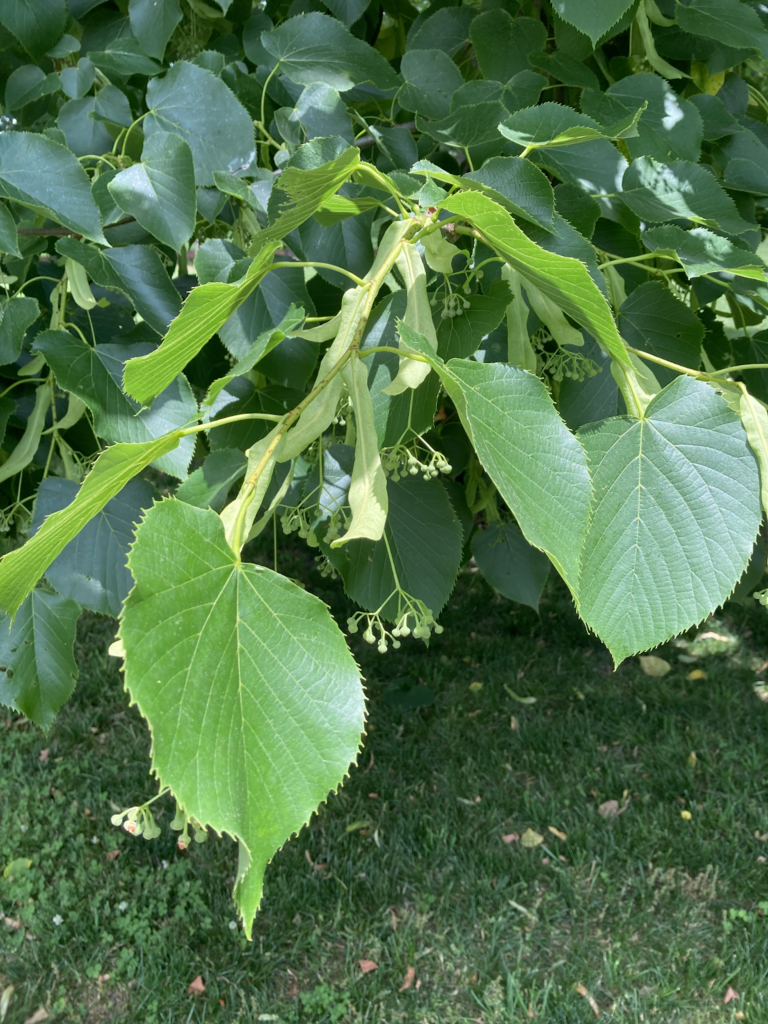“When the shade begin to be heavy and the midges fill the woods, and when the western sky is a curtain of black nimbus slashed by the jagged scimitar of lightning, when the wood thrush seldom sings except after heavy rain and instead the rain crow, our American cuckoo, stutters his weary, descending song – an odor steals upon the moist and heavy air, unbelievably sweet and penetrating.” – Donald Peattie, A Natural History of Trees of Eastern and Central North America
I won’t even attempt to compete with the poetic prose of perhaps our nation’s most eloquent botanist, Donald Culross Peattie (June 21, 1898 – November 16, 1964). Just take a moment to savor that sentence. Then take a moment to go out and find a Tillia in flower – any member of the genus will do – and appreciate what he’s talking about. Sit down under its (hopefully) wide, spreading branches and drink in that sweet smell.
Tillia americana is our native basswood or American linden, the tree to which Peattie was referring. It is a large, fast, growing species, commonly reaching 80 feet in height by 50 or more in spread. It has smooth fluted bark that traces along the trunk and mature branches as they ascend in an arching, fountainesque habit into the sky, which in the summer will be completely obscured by its dense foliage. It is closely related to two other common landscape species, Tillia cordata (littleleaf linden) and Tillia tomentosa, silver linden, both European. In their native lands these species are often called ‘limes’. Tillias are held in the highest esteem for their honey, medicinal flowers and leaves, and light yet sturdy wood, and feature prominently in European mythology and history, and are common in cities and parks. European specimens have been dated to 700-1000 years. They are often hedged, to form a solid wall of foliage that seems to float 10-20 feet off of the ground, and also pollarded. Both of these practices don’t tend to sit right with most American tree lovers – we tend to prefer a natural form and European pruning can seem brutal to us, with pollarding in particular bearing an uncomfortable resemblance to topping. But these are ancient practices and tillias have been known to thrive under them for centuries, however aesthetically offensive they may be to us.
The tillias cast some of the thickest shade of any genus, more so than even the maples. This strength, however, is also perhaps the genus’s greatest weakness; they are notorious branch droppers. Combined with the soft wood and tendency to form tight branch angles, the heavy leaf mass allows wind storms to pry them apart. These problems are often mitigated by hedging and pollarding in Europe, which prevents the huge and heavy branches from forming in the first place. Unfortunately our native basswood is the worst offender due to its gigantic leaves, and so outside of parks and natural areas it isn’t often planted. It is the largest, most cumbersome member of the genus. Like the other tillias it is also a common target of insects (owing to its tasty leaves, which are sometimes even palatable to humans as they first emerge).
We ask so much of our trees so much of the time, and expect them to thrive under stressful conditions with no appreciable maintenance. Our finest species typically cannot satisfy such heavy demands, and the tillias are no exception. If situated properly and pruned diligently though, they will quickly provide plenty of shade, wonderful fragrance, leaves, flowers and berries for tasty and medicinal tea, and an abundance of sweet pollen and honey




